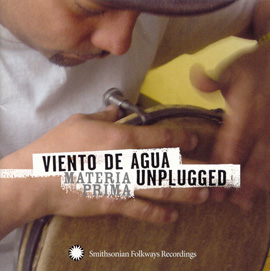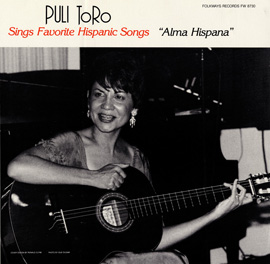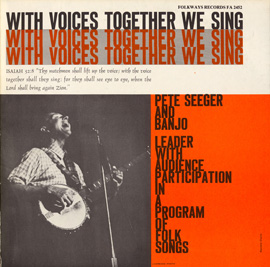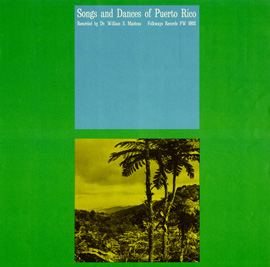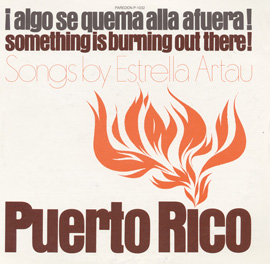Summary
Puerto Rican culture is a representation of the diverse heritages of three main cultural groups: Taíno Indians, Africans, and Spaniards. This lesson focuses on the African influences found in Puerto Rico’s musical culture by studying bomba music.
Suggested Grade Levels: Grades 3-5, 6-8
Country: Puerto Rico
Region: Caribbean
Culture Groups: Puerto Rican, African
Genre:
Instruments: Cúa, Maracas, Drums
Language: Spanish
Co-curricular Areas: Spanish, Social Studies, Language Arts, History
National Standards: 1, 2, 3, 6, 8, 9
Objectives:
- Students will be able to create sounds to represent various body movements.
- Students will be able to play repeated rhythms on various unpitched percussion instruments with a steady tempo.
- Students will be able to play in a percussion ensemble with multiple parts.
- Students will be able to improvise body movements with and without music.
Material:
- Mohr, Nicholasa, and Antonio Martorell. 1995. The song of el coquí and other tales of Puerto Rico. New York: Viking.
- Website - http://www.musicadelpueblo.org/
- Smithsonian Folkways, “Siré y Siré” by Viento de Agua from Unplugged Materia Prima
- Woodblocks (two sticks each)
- Maracas
- Small and large drums
Lesson Segments:
- La Guinea (National Standard 9)
- Bomba (National Standards 1, 6, 8, 9)
- Drumming and Dancing (National Standards 2, 3, 8)
Lesson Segment 1: La Guinea
- Introduce this lesson with a story written by Mohr and Martorell (1995) in the book, The Song of El Coquí and Other Tales of Puerto Rico.
- This tale about a stowaway hen is a symbolic story of enslaved African people.
- The story describes how a stowaway hen is moved from her home and the experiences she has had since leaving Africa.
- Discuss story with class.
- Tell students that the people who traveled that same journey from Africa brought many of their traditions with them. These traditions are weaved throughout Puerto Rican culture.

Lesson Segment 2: Bomba

“Siré y Siré (bomba)”
from Viento de Agua Unplugged: Materia Prima (2004) | SFW40513
- Bomba comes out of the musical traditions brought to the “New World” by enslaved Africans in the 17th century. Bomba music was used as a form of political and spiritual expression. Its lyrics conveyed various emotions.
- Bomba was also used for dancing and celebration, and helped inform community and identity.
- Visit http://www.musicadelpueblo.org/.
- Navigate to “Rhythm” and then to “Bomba”
- Read the history and information of bomba

- Expand on the first sentence in the third section, “Bomba is sung in call-and-response fashions”
- Ask: “Does anyone have an idea on what call-and-response might mean?”
- Listen to the track heard on the website (Siré y Siré). Also found on track 5
- Point out the call (one man singing, lyrics change).
- Point out the response (multiple singers singing the same lines each time).
- Pause the music & teach students the response sung in Siré y Siré.
- Speak each line and translate it for your students.
- Have students speak the line with you.
- Model singing the line to students and have students echo back.
- Restart track and invite students to sing along to the response throughout the recording.
|
Spanish Lyrics |
Translation |
|
Siré, Siré, sí me voy para Mayagüez |
Yes, I’ll go, yes, I’ll go, yes I’m heading for Mayaguez / Yes, I’ll go, yes, I’ll go, for they’re playing my balance (my rhythm) |
- History of bomba
- Instruments
- Musicians and dancers

Extension: Watch another example of bomba on the Smithsonian website. Teach simple bomba dance steps and dance to some of the examples played in class.
Assessment: Listen and observe students to assess if they are singing the response section correctly. Ask questions following the movie pertaining to bomba history and instruments.
Lesson Segment 3: Drumming and Dancing
- Review that in bomba music el primo is the drum that represents the dancer’s movements.
- Gather in a circle.
- Distribute one of the following instruments to students:
- Woodblocks
- Maracas
- Drums (small and large)
- Stand in the middle of the circle and invite students to make sounds with their instrument that represent your movements.
- Move around the inside of the circle (use movements including jumping, stomping, sliding, tip-toeing, swaying, etc.) and let students create sounds representing movements.
- After this, invite students or groups of students to take turns being the mover or dancer.
Assessment: Listen and observe students to assess if they are matching the dancer’s movement with the rhythm of their instruments.
Teach the rhythms for each instrument using speech and body percussion
Cúa (Wood Block)
Have students pat on their thigh

Maracas
Have students use one fist to say and “play” the maraca rhythm in the air

Drums
Have all students say the drum part while playing it on their knee and thigh

Transfer these rhythms over to the instruments
Wood Blocks- represents a cua
- Lie woodblock on floor and use two sticks to hit them
Maracas
- Now that students have a maraca in their hand, make sure they are wrapping their hand around the base of the instrument, not the stick.
- Help students keep sound steady
Drums
- Review high and low sounds
Make sure students pass or rotate instruments around the circle throughout lesson
When starting a new cycle of students on the instruments
- Review part for the larger drums
- Have students repeat continuously
- Review and add in maraca part
- Review and add in wood block part
Return to center of the circle now that underlying rhythms are established and steady
- Split drums into two groups: “primo” and “bulleador (barrel drums)”
- Have primo drums play to your movement while everyone else plays their regular parts for that instrument
- Rotate roles so that students may try moving and playing the different instrument parts
Extension: Expand on the masks mentioned in the story of La Guinea and begin a lesson on Puerto Rico’s Carnival (where bomba can be heard!) and vejigante. Visit below:
http://amhistory.si.edu/ourstory/activities/puerto/
http://amhistory.si.edu/ourstory/pdf/puerto/carnival_mask.pdf
http://amhistory.si.edu/ourstory/pdf/puerto/carnival_dress.pdf
Assessment: Observe students playing body percussion and other instruments as to whether or not they are using correct technique, playing the correct rhythms, and staying in time.


